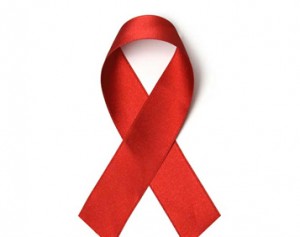Ghana national HIV prevalence rate drops to 1.6% in 2014
 The national HIV prevalence rate fell to 1.6 percent in 2014 from 1.9 per cent in 2013, the HIV Sentinel Survey has revealed.
The national HIV prevalence rate fell to 1.6 percent in 2014 from 1.9 per cent in 2013, the HIV Sentinel Survey has revealed.
The prevalence rate has dropped three times in previous years; first in 2005, 2008 and 2014.
According to the survey, the Regional HIV prevalence ranged from a high of 3.7 per cent in the Eastern Region to a low of 0.6 per cent in the Northern Region.
The HIV Sentinel Survey is a cross sectional survey targeting pregnant women attending Antenatal Clinics (ANC) in selected ANC sites in Ghana.
In the last nine years, the HIV Sentinel Survey (HSS) data has been used as the primary data source for the National HIV and AIDS estimates in Ghana. The HSS Report thus presents prevalence among pregnant women.
Dr Stephen Ayisi Addo, the Acting Programme Manager of the National AIDS Control Programme (NACP), who presented the report, said the 2014 survey is the 23rd of such reports since its inception.
The survey said site prevalence ranged from 0.2 per cent in Nalerigu in the Northern Region to 8.5 per cent in Agomanya in the Eastern Region.
He said the urban median HIV prevalence was higher than rural (2.0 per cent compared to 1.1 per cent) and urban mean HIV prevalence was also higher in urban than rural locations (2.8 per cent compared to 1.4 per cent).
The HIV prevalence among the young population (15-24 years), a proxy for new infections, increased from 1.2 per cent to 1.8 per cent with proportion of HIV subtype 1 as 96.2 per cent compared to 1.9 per cent for both sub-type 2 and dual infection in the 2014 survey.
Median syphilis prevalence for 2014 is 0.6 per cent (Confidence Interval: 0.48 – 0.72) and regional syphilis prevalence ranged from 0.1 per cent in Brong Ahafo to 3.2 per cent in the Central Region.
Median syphilis prevalence for 2014 was almost the same in both rural and urban locations (0.5 per cent and 0.6 per cent respectively), whilst mean rural syphilis prevalence was higher than urban prevalence of 1.2 per cent compared to 0.7 per cent).
HIV prevalence amongst STI clients is 4.2 per cent and syphilis prevalence amongst STI clients is 0.6 per cent.
A linear trend analysis of Antenatal Clinics HIV prevalence since 2000 shows a declining epidemic, Dr Ayisi Addo said, and added that, overall, there is a decline in Ghana but the momentum must be kept to ensure further decrease in prevalence areas.
He said there was the need for continuous quality assurance to ensure data quality, adding that, sites with low prevalence rates must work hard to complement the consistent reduction in high prevalence areas.
He said resources and efforts should be channeled to priority areas to ensure a generation, free from HIV and AIDS.
In a statement read on behalf of the Health Minister, Dr Emmanuel Ankrah Odame, Deputy Director for Policy, Ministry of Health, said the second consecutive drop in HIV prevalence in the 2014 survey must not induce a state of complacency, adding that, government was committed to ensure that HIV and AIDS prevention and control remains a priority issue for incremental resource allocation, despite the current economic challenges.
He said “as Ghana gets close to completing the grant process for the new funding allocation by the global funding for AIDS, TB and Malaria, I sincerely hope that all stakeholders will work hard to ensure a high impact in the prevention of Mother-To-Child Transmission (MTCT), early detection and treatment of sexually transmitted infections, antiretroviral therapy and prevention amongst key populations”
Service providers should work harder with the limited funding available to ensure further reduction in new infections through the Elimination of MTCT and Anti Retroviral (ART) towards the sustainable development goals, Dr Odame said.
He said the 2014 HIV survey has shown that HIV prevalence is really stabilizing below 2 per cent, however, the increase in new infections amongst the youth calls for a vigorous targeted response.
Source: GNA
